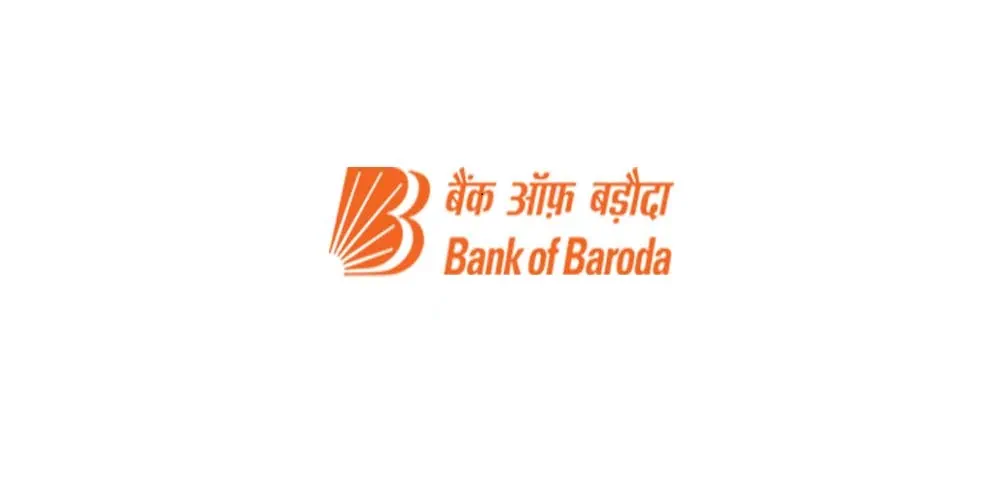
How to Invest in Mutual Funds
06 Sep 2023

Table of Content
-
What are Mutual Funds?
-
Why should you Invest in Mutual Funds?
-
What are the Different ways of Investing in Mutual Fund Schemes?
-
How to Start Investing in Mutual Funds?
-
How to Invest in Mutual Funds from your Bank Account?
-
How to Invest a Lump Sum in Mutual Fund Schemes?
-
Things to Consider as a First-Time Investor
-
Conclusion
-
FAQs on Types of Mutual Funds
The asset under management (AUM) of the Indian mutual fund industry has surpassed ₹43 trillion in the past 10 years. Here are some of the factors that have fueled this growth:
- Increasing awareness of financial products
- The growing popularity of systematic investment plans (SIPs)
- Digital transformation
- Higher household disposable income
- A favorable regulatory environment
So how do you get started?
We'll show how in this article.
What are Mutual Funds?
Mutual funds are investment vehicles that pool money from multiple investors and invest it in a variety of assets. Fund managers, who are highly qualified professionals, manage these funds. Investors can choose from a variety of mutual funds, each with its own investment objective, risk profile, and potential return.
Why should you Invest in Mutual Funds?
A few key benefits of investing in mutual funds are:
- Diversification: Mutual funds offer diversification, which reduces risk by spreading your money across different assets. This helps to reduce the risk associated with investing in individual securities, as losses in some investments may be offset by gains in others.
- Professional management: Mutual funds are managed by well-qualified and experienced fund managers. These managers make investment decisions on behalf of investors, and they are assisted by a team of experts who analyze securities, monitor the market, and adjust the fund's holdings as needed.
- Liquidity: Mutual funds are also liquid, which means that investors can buy or sell their units on any business day. The redeemed amount will be credited to their bank accounts within 1-4 working days, depending on the type of scheme.
- Accessibility and affordability: Mutual funds are accessible to investors at a low cost. Investors can start investing with relatively small amounts of money, making them suitable for both novice investors and those with limited capital. Mutual funds achieve cost efficiencies by pooling money from multiple investors, which leads to lower investment costs compared to investing in individual securities.
- Flexibility: Mutual funds offer a range of options to investors, such as debt, equity, hybrid funds, and more. Each type has its own unique characteristics and potential benefits. Investors can select funds that match their financial objectives, level of risk comfort, and investment timeline.
- Tax benefits: Investors can get tax advantages by parking money in certain types of mutual funds, such as Equity Linked Saving Schemes (ELSS).
- Regulatory oversight: In India, mutual funds are regulated by the Securities and Exchange Board of India (SEBI). SEBI has laid down stringent rules and regulations to protect investors' interests and ensure transparency, including requirements for reporting, disclosure, and risk management.
Also Read - Different Types of Mutual Fund Schemes in India
What are the Different ways of Investing in Mutual Fund Schemes?
Investing in mutual funds is a relatively simple process with several options.
- Individuals can visit the nearest branch office of the mutual fund, designated Investor Service Centres (ISCs), or Registrar & Transfer Agents (RTAs) of the respective mutual fund, along with a duly filled application form, necessary documents, and a cheque or bank draft.
- Individuals can also invest in mutual fund schemes online through online platforms or the websites of fund houses.
- Investors have the option to invest in a mutual fund through a mutual fund distributor registered with AMFI. This distributor can be an individual, a bank, a broker house, etc.
How to Start Investing in Mutual Funds?
Now, let's glance at how to invest in mutual funds in India.
How to Select a Mutual Fund?
While selecting a mutual fund scheme, investors should consider various elements, and they are:
- Determine financial objective and investment horizon. What are your goals for investing? Are you saving for retirement, a down payment on a house, or something else? How long do you have until you need the money?
- Assess risk tolerance. How much risk are you comfortable with? If you're nearing retirement, you may want to choose a lower-risk fund. If you're younger, you may be able to afford to take on more risk.
- Choose the mutual fund type. There are many different types of mutual funds, each with its own risk and reward profile. You'll need to choose a fund that's appropriate for your financial goals and risk tolerance.
- Decide on an active or passive management style. Actively managed funds try to beat the market, while passively managed funds track a specific index. There are pros and cons to both approaches.
- Check the performance of shortlisted funds. How have the shortlisted funds performed over the past few years? How do they compare to their peers?
- Analyze the expense ratio. The expense ratio is the percentage of your investment that goes to fees. A lower expense ratio means more of your money goes to work for you.
- Check the liquidity and size of the fund. How easy is it to buy and sell shares in the fund? How large is the fund? Larger funds are more liquid, but they may also be more expensive.
- Assess the fund manager's expertise. How experienced is the fund manager? What is their track record?
- Read the policy document. This document will tell you everything you need to know about the fund, including its investment objective, risk profile, and fees.
- Ensure the fund complements existing investments. Make sure the fund you choose complements your existing investments and helps you achieve your financial goals.
How to Open a Mutual Fund Account?
Investors can open mutual fund accounts online or offline.
- Online: Investors can open mutual fund accounts online through the websites of fund houses or online platforms.
- Offline: Investors can contact a mutual fund distributor or the nearest branch office to open an offline account.
How to Buy Mutual Funds?
Individuals can use online or offline modes to buy mutual funds. Investors can purchase mutual funds offline by visiting the closest office of the fund house or through a distributor.
- Select an online platform or the website of the fund house.
- Sign up on the chosen online platform by providing your name, email address, PAN, and Aadhaar number.
- Complete the KYC process by submitting scanned copies of your PAN card, Aadhaar card, and bank statement.
- Select the mutual fund that aligns with your investment goals and risk appetite.
- Link your bank account with the online platform.
- Initiate the investment by specifying the amount and selecting the investment mode (lump sum or SIP).
- Transfer the investment amount to the online platform or fund house.
- Track your investment performance online.
- Adjust your investment plan, switch between various funds, and fully or partially withdraw your investment as needed.
How to Buy Direct Mutual Funds?
- Online: Through the fund house's website or online platforms (check if they offer direct plans).
- Offline: Using a physical application form at the ISC of the concerned mutual fund or its RTA, along with a demand draft or cheque.
Direct plans have many advantages over their regular counterparts, and a few of them are:
- Lower expense ratio: Direct mutual funds have a lower expense ratio as they do not have commission or distributor fees.
- Higher returns: Due to the lower expense ratio, direct plans can generate higher returns than their regular counterparts.
- Significant cost savings: Over the long term, the cost savings from investing in direct plans can be significant.
- Higher transparency: There is no intermediary between the investor and the fund house, so there is higher transparency.
- Direct investment, monitoring, and management: Investors can directly invest, monitor, and manage their investments online without intermediaries.
How Much to Invest in Mutual Funds?
The amount to invest in mutual fund schemes depends on various parameters, such as the investor's financial objective, risk tolerance, investment horizon, and current financial situation. Though no fixed minimum investment amount is mandated by law, most mutual funds in India have their own minimum investment requirements.
The minimum investment amount for most mutual fund schemes ranges between Rs.500 to Rs.5,000. However, some categories of funds have a higher minimum investment amount.
How to Invest in Mutual Funds from your Bank Account?
Individuals can only invest in mutual funds from their own bank account . This can be done online or by cheque, but third-party cheques are not permitted. A third-party cheque is one that is signed by someone other than the first account holder.p[
There are some exceptions to the prohibition on third-party cheques, such as payments made by parents, grandparents, or other related persons on behalf of a minor, or payments made by employers in the name of employees under a systematic investment plan (SIP) through payroll deductions. Payments made by custodians on behalf of foreign institutional investors (FIIs) or clients are also eligible for exemption.
How to Invest a Lump Sum in Mutual Fund Schemes?
A lump sum investment implies investing a large sum in a mutual fund scheme in a single transaction. It's just the opposite of systematic investments. Investors can invest a lump sum in both direct and regular plans.
Here are some steps to consider when investing a lump sum in mutual funds:
- Select a suitable scheme. Research different mutual funds and their historical performance. Consider your financial objectives, risk tolerance, and investment goals when choosing a mutual fund.
- Choose a reputed fund house. Choose a fund house with a good track record and reliable customer service.
- Open a mutual fund account. You can open an account online or through a broker.
- Determine the amount to invest. Make sure you can afford to invest the lump sum and that you won't need the money in the near future.
- Transfer the funds from your bank account. You can do this online or through a broker.
- Regularly monitor the fund's performance. Investors may need to rebalance their portfolios periodically to maintain their desired asset allocation.
Things to Consider as a First-Time Investor
As a first-time investor in mutual funds, several key factors must be considered. Here are some essential points to keep in mind:
- To start, an investor should identify their financial objective. This could be long-term growth, income generation, or capital preservation.
- Next, they should assess their risk tolerance. Typically, funds that offer higher potential returns also carry higher risks.
- Then, they should decide on their investment horizon. Longer investment horizons have the potential to take on more risk and earn higher returns
- After that, they should research different funds based on their investment goals, risk tolerance, and investment horizon. They should also consider the past performance of the fund, its expenses ratio, fund manager expertise, and investment objective.
- The investor should then diversify their portfolio by not putting all their eggs in one basket. Instead, they should invest in a variety of funds to reduce their risk.
- Investing through a systematic investment plan (SIP) is advisable for first-time investors. With a SIP, an investor invests a fixed amount of money every month, regardless of the market conditions. This helps them to dollar-cost average their investment and reduce their risk.
- The investor must have an active bank account to invest in mutual funds. Making payments through net banking is advisable as it is straightforward, swift, and secure.
- To invest in mutual funds, it is necessary to complete the KYC This is mandated by the government to prevent money laundering. To successfully complete the KYC process, investors must have a valid PAN card and identity proof.
- The mutual fund investment process is straightforward. However, first-timers may face challenges as they are new to investing. In such circumstances, they can take the help of registered financial advisors."
Conclusion
Mutual funds offer several benefits, of which diversification is the most important. The market is currently flooded with a variety of mutual fund categories. For a beginner, finding the right fund can be challenging, as the fund selection process involves analyzing multiple factors. Therefore, it is advisable to seek the assistance of a registered financial advisor.
FAQs on How to Invest in Mutual Funds
1. How to check mutual fund status?
Investors can check their mutual fund status by contacting their distributors. Besides, investors can check their mutual fund status online by logging in to their accounts. Additionally, investors have the option to call the customer service centre of the fund house to get the status of their investments.
2. How to check mutual fund status with folio number?
Investors can track their mutual fund investments using the folio number provided by the fund house. They can check the status on the fund house's website, mobile app , online platforms, or by calling customer care.
3. How to add nominees in mutual funds online?
Investors can add or change nominees for their mutual fund units at any time. To do this, they can either fill out the nomination section in the application form when purchasing new units, or they can log into their online account and update their nominee information.
4. Is a Demat account required for mutual funds?
It is not mandatory to have a Demat account for purchasing mutual fund units.
Popular Articles
-
Disclaimer
The contents of this article/infographic/picture/video are meant solely for information purposes and do not necessarily reflect the views of Bank of Baroda. The contents are generic in nature and for informational purposes only. It is not a substitute for specific advice in your own circumstances. Bank of Baroda and/ or its Affiliates and its subsidiaries make no representation as to the accuracy; completeness or reliability of any information contained herein or otherwise provided and hereby disclaim any liability with regard to the same. The information is subject to updation, completion, revision, verification and amendment and the same may change materially. The information is not intended for distribution or use by any person in any jurisdiction where such distribution or use would be contrary to law or regulation or would subject Bank of Baroda or its affiliates to any licensing or registration requirements. Bank of Baroda shall not be responsible for any direct/indirect loss or liability incurred by the reader for taking any financial decisions based on the contents and information mentioned. Please consult your financial advisor before making any financial decision.






